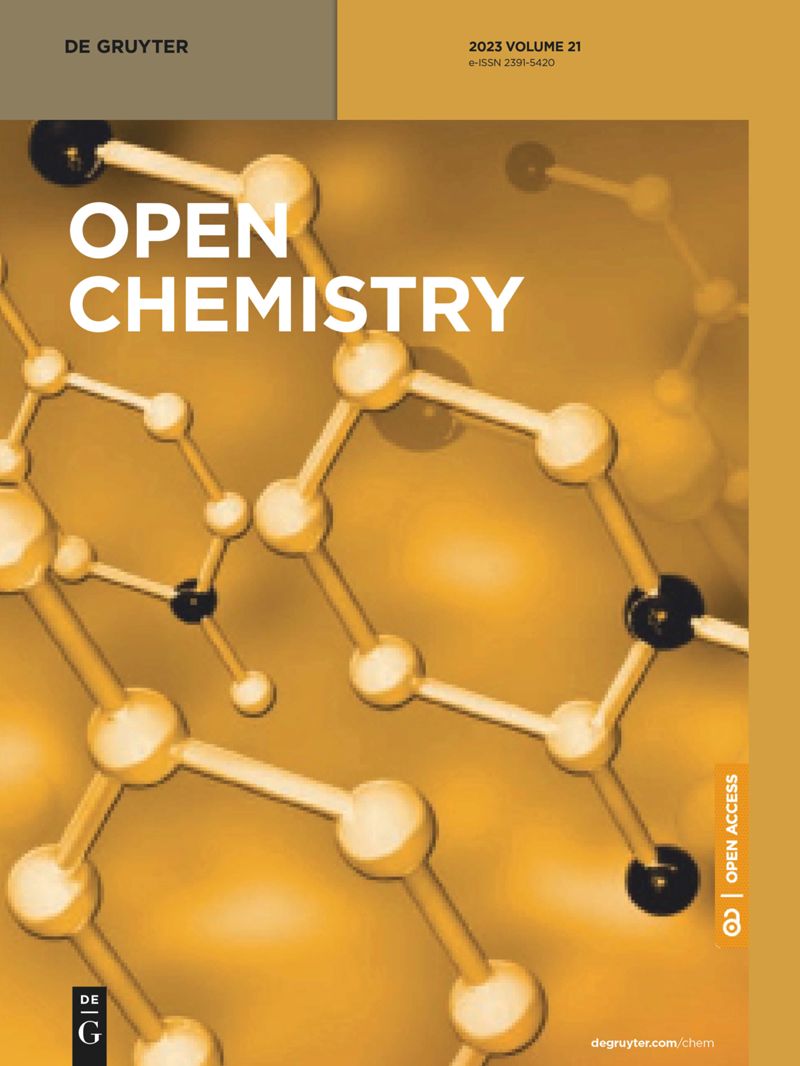Determination of heavy elements in agricultural regions, Saudi Arabia
IF 1.9
4区 化学
Q3 CHEMISTRY, MULTIDISCIPLINARY
引用次数: 0
Abstract
This study utilized an inductively coupled plasma emission spectrometer (model ICPE-9000) to determine the concentrations of Mo, Hg, Cd, Be, Co, V, Se, Ti, As, Cr, Zn, Mn, Cu, Fe, Ni, and Pb elements in the soil samples, and estimate its ratio compared to the standard global percentages. Several indices were employed, including enrichment factors, pollution load index, and accumulation index. The concentration of heavy metals in the soil samples was below the average concentration found in the soil. However, there were exceptions for five minerals, Cd, Mo, As, Se, and Hg, which had concentrations exceeding the average. The potential contamination or elevated levels of these heavy elements in soil could have implications for plant growth and environmental quality. In the soil, the pH levels were from 5.1 to 6.4, with an average pH of 5.8, and electrical conductivity ranged from 2.14 to 7.89 µS/m. The highest total dissolved solids found in the Qassim region were 1,710 mg/L, and lower values were observed in the Medina region. Furthermore, this study noted a high concentration of Cl沙特阿拉伯农业地区重元素的测定
本研究利用电感耦合等离子体发射光谱仪(ICPE-9000 型)测定了土壤样本中 Mo、Hg、Cd、Be、Co、V、Se、Ti、As、Cr、Zn、Mn、Cu、Fe、Ni 和 Pb 元素的浓度,并估算了其与全球标准百分比的比率。研究采用了多种指数,包括富集因子、污染负荷指数和累积指数。土壤样本中的重金属浓度低于土壤中的平均浓度。不过,有五种矿物质(镉、钼、砷、硒和汞)的浓度超过了平均值。土壤中这些重元素的潜在污染或含量升高可能会对植物生长和环境质量产生影响。土壤的 pH 值在 5.1 到 6.4 之间,平均 pH 值为 5.8,电导率在 2.14 到 7.89 µS/m 之间。卡西姆地区的溶解固体总量最高,为 1,710 毫克/升,麦地那地区的溶解固体总量较低。此外,这项研究还发现卡西姆地区土壤中的 Cl- 阴离子浓度较高,最高浓度为 283.9 毫克/升,表明土壤中存在氯离子。这项研究将为沙特阿拉伯的农业界提供有关农作物的金属和土壤行为的重要信息。
本文章由计算机程序翻译,如有差异,请以英文原文为准。
求助全文
约1分钟内获得全文
求助全文
来源期刊

Open Chemistry
CHEMISTRY, MULTIDISCIPLINARY-
CiteScore
3.80
自引率
4.30%
发文量
90
审稿时长
6 weeks
期刊介绍:
Open Chemistry is a peer-reviewed, open access journal that publishes original research, reviews and short communications in the fields of chemistry in an ongoing way. The central goal is to provide a hub for researchers working across all subjects to present their discoveries, and to be a forum for the discussion of the important issues in the field. The journal is the premier source for cutting edge research in fundamental chemistry and it provides high quality peer review services for its authors across the world. Moreover, it allows for libraries everywhere to avoid subscribing to multiple local publications, and to receive instead all the necessary chemistry research from a single source available to the entire scientific community.
 求助内容:
求助内容: 应助结果提醒方式:
应助结果提醒方式:


